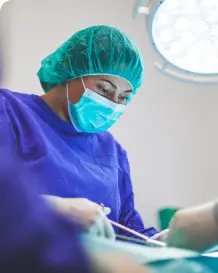Vasectomy Surgery in Noida
Vasectomy is a surgical procedure for male sterilization or permanent contraception. It is performed as an outpatient procedure under local anesthesia. Vasectomy procedures can be of two types – no-scalpel and traditional. Re... Vasectomy is a surgical procedure for male sterilization or permanent contraception. It is performed as an outpatient procedure under local anesthesia. Vasectomy procedures can be of two types – no-scalpel and traditional. Read further to know all about vasectomy in Noida. Read more
Happy patients
 50+
50+
Expert surgeons
Personal Assistance







